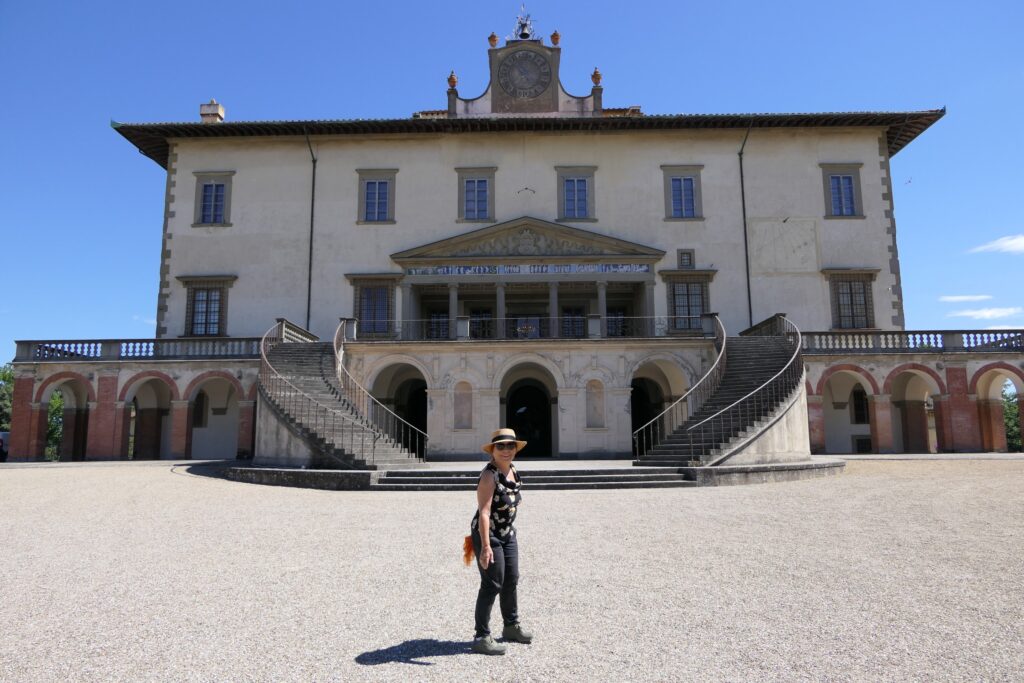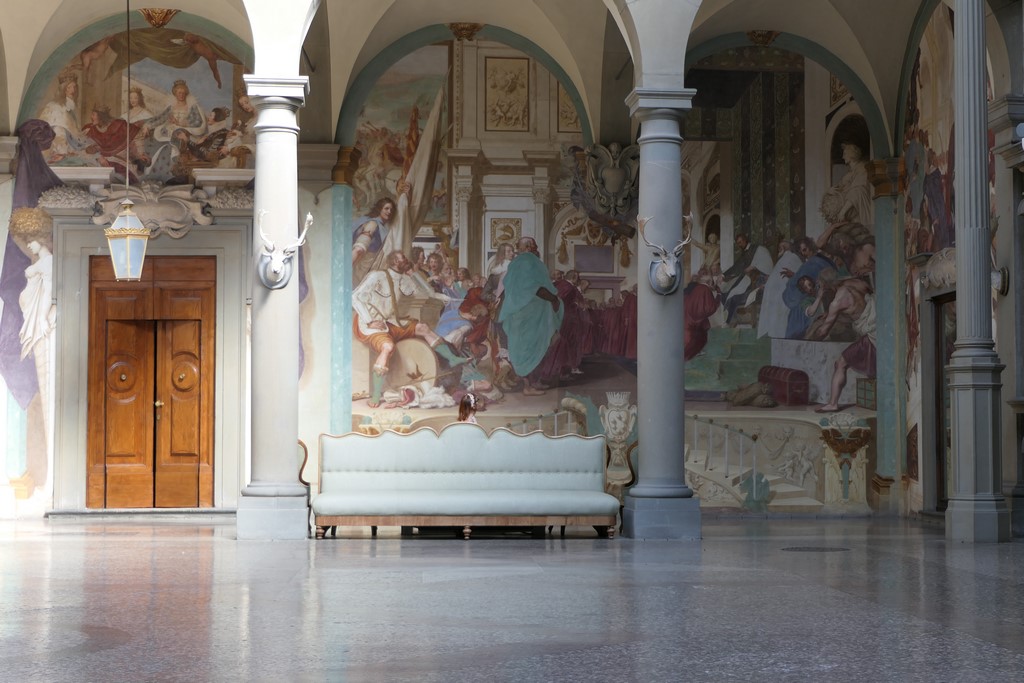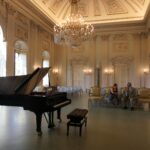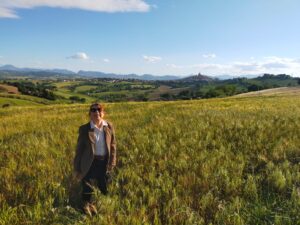Camper Tour of Florence Medici Villas, UNESCO Heritage Sites
Exploring the Medici Villas: The Heart of the Tuscan Renaissance
Art, Mysteries, and the Tragic Fates of Renaissance Women in the UNESCO Residences of the Medici
by Syusy Blady
Traveling through the Medici villas of Tuscany, designated as UNESCO World Heritage sites, is not only a way to immerse yourself in the true Italian Renaissance, with its beauty, harmony and rediscovery of the classics, but also a way to escape the often overcrowded tourist areas in the center of Florence. These villas represent what the Medici themselves considered the best of their era. Generations of the Medici family invested substantial amounts of money to acquire and renovate numerous properties, that became the emblem of their power and prestige.



I visited about ten of them: Cerreto Guidi, Poggio a Caiano, Poggio Imperiale, Pratolino, La Petraia, Villa Castello, Serravezza, the Boboli Gardens and Palazzo Medici Riccardi itself. Whenever possible, I reached them by bike, following the Via Medicea (i.e. Medici Route) or traveling by other means to the more distant villas. As I described in my videos, I think it’s a unique opportunity for tourists that lets them relive both the public and private moments in the Medici family’s history: from the opulence of the family patriarch Bicci and Cosimo the Elder, to the Pazzi Conspiracy, the dark tales of the Grand Dukes Francesco and Ferdinando, and the noir stories involving Renaissance women like Isabella and Bianca. Women of the Renaissance, like Bianca Cappello and Isabella, often met tragic ends at the hands of men. At that time, it was a common truth that nobody, not even those with high standing, spoke up for them.
Two Villas and Two Women
To tell the story of the Medici Villa at Cerreto Guidi, it is inevitable to speak of Isabella de’ Medici, the pearl of the Renaissance. On July 16, 1576, Isabella died right here in Cerreto Guidi. But what really happened? Was she killed by her husband, strangled on the bed that can still be seen in her room today? Isabella was the beloved daughter of Cosimo I de’ Medici and Eleonora of Toledo. She was one of the most cultured women of her time: she spoke French, Italian, Spanish and also knew Latin and Greek. She was educated to become a great lady, and indeed her father brought her along to the most important political and ceremonial events of the time. But she loved art. At her court there were poets, artists and musicians. She herself composed music and played the lute.



Isabella had to wed Paolo Giordano Orsini, a notable aristocrat, at the tender age of 14, as was inevitable. Their wedding was lavish, almost royal. But did they love each other, or didn’t they? Was it a marriage of convenience? According to the rumors, Orsini had a mistress whom he married after Isabella’s death, and that she, perhaps, was involved with her husband’s cousin. In 2011, the archivist Elisabetta Mori published a book that debunks these rumors, recovering around 500-600 letters that the two spouses exchanged. From these letters, a deep mutual love emerges: he wrote to her, “I adore you, my beautiful, and believe me, when I die, neither children, nor status, nor friends, nor ladies, for no other reason will I be remembered, except that I adore you.” And Isabella returned his love, as shown by a famous musical composition. In her portrait, Isabella holds a sheet of music, which could be the song “Lieta, vivo e contenta“, a declaration of love for her husband… or for Orsini’s cousin, as gossip claimed? The mystery of Isabella’s death, right here in Cerreto Guidi, remains unsolved. Back then, as today, love could be a risk.
The Medici Villa of Poggio a Caiano
The tiny church of Bonistallo is perched above the hill with a view of the Villa of Poggio a Caiano. The intestines of Bianca Cappello and Francesco I were discovered here. However, why were they kept intact? to be investigated after their contentious deaths. This was the setting for a noir story set in the shadow of the Medici Villa of Poggio a Caiano. So let’s walk in the direction of the villa. We can walk there, following a part of the Medici Road, which currently connects all of the Medici Villas in the Prato area. One such property is the Pratolino Garden, which I visited and which features an alchemical garden that was commissioned by Grand Duke Francesco, who may have been more interested in occult studies than politics. In Pratolino, I learned about the love story between Bianca and Francesco, which has its tragic ending right here. Upon arriving at the villa, the first thing that strikes you is surely the frieze commissioned by Lorenzo the Magnificent, who ordered the villa’s construction. The frieze represents the passage of the soul from one life to another, with references to Ovid, Plato and many hermetic symbols. Being hermetic, they are difficult to understand… If not, they would be clear! But here we are at the height of the Renaissance, an era of philosophical rediscovery of the classics, chasing the good life, beauty, art, and also… beautiful women. Speaking of which, we must talk about the life of Bianca Cappello, a real-life fairy tale!



Bianca was the first “social climber” before the term even existed. She was born in 1548 in Venice. After her mother’s death, she had a stepmother who confined her to a room in the palace. But like in the tale of Rapunzel, she allowed herself to be “rescued” by Pietro Bonaventuri, who took her to Florence, the New York of the time! But like in the tale of Bluebeard, Pietro turned out to be domineering and impoverished: he made her work as a servant, promptly dismissing the actual maid. Naturally, like Cinderella, Bianca managed to attend the ball! She went to the Medici Court, where Francesco I, Grand Duke of Tuscany, immediately fell in love with her, despite already being married to Joanna of Austria. Bianca even became Joanna’s lady-in-waiting, who had the good grace to die shortly after, leaving Francesco free… A few days after his wife’s funeral, Francesco hastily married Bianca in a private ceremony. But did they live happily ever after? No way! Just like in fairy tales, Bianca had a great enemy—Ferdinando, Francesco’s brother, who had been forced into a religious career. He spoke terribly of Bianca and made everyone hate her.
However, Ferdinando eventually appeared to regret saying these hurtful things and desire to make up with Francesco and Bianca. What better way to do so than by inviting them to a lunch at the Villa of Poggio a Caiano, right here? After lunch, both Francesco and Bianca began to feel ill, with severe stomach problems. They were separated and could no longer see each other or any family members. Thus, they died simultaneously, kept apart until the end by Ferdinando, who continued writing: “They are recovering, everything is fine.” Fine? They were dying! They couldn’t even embrace in the final moment of their lives. When the intestines, preserved for examination, were later analyzed, it was said they had died of malaria… but arsenic was also suspected!
The Medici Villa of La Petraia



The truth is that Ferdinando left the priesthood after his brother Francesco passed away, rose to the position of Grand Duke, and arranged a significant marriage. His royal marriage to Cristina of Lorraine was commemorated by the well-known opera The Intermedi of La Pellegrina. The bride then decided to live in La Petraia, with its magnificent loggia decorated with images of prominent Medici family members, as though to convey the message, “This is serious business; the Medici are not just incredibly wealthy and powerful, but more than noble.” Ferdinando also had lunettes painted, showing off all of his possessions, including his cherished villas. The Electress Palatine, a descendant of the Medici family, had the vision to donate her wealth to the Italian State, allowing people to still visit and enjoy these estates today. She granted permission under the condition that they were used to preserve the creative legacy and arouse the interest of foreign visitors—in other words, tourists like us.














